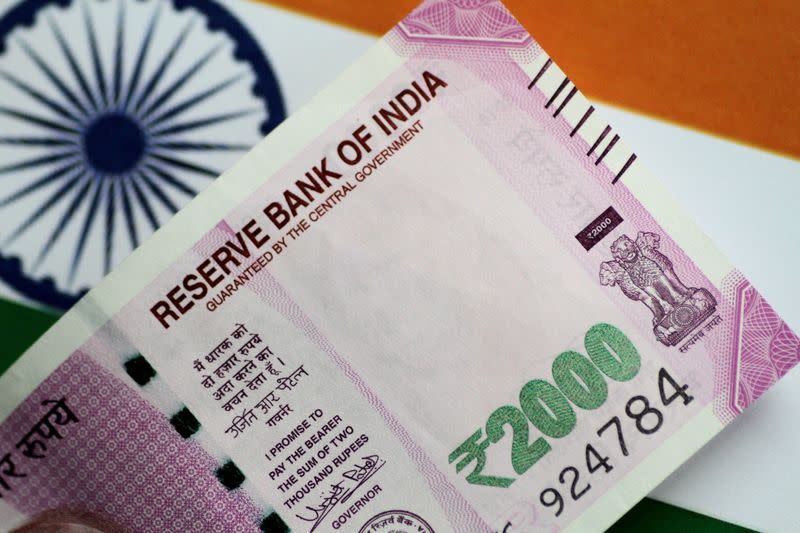India’s central bank said on Friday it will withdraw its 2000-rupee notes – the highest currency note – from circulation.
The 2000-rupee ($24.50) note, which was introduced in 2016, will remain legal tender but citizens have been asked to deposit or exchange these notes by September 30, 2023.
The move is similar to a shock decision in 2016 when the Modi government withdrew 500 and 1000 rupee denominations – 86% of the economy’s currency in circulation – abruptly in an effort to remove forgeries from circulation.
This time, however, the move is expected to be less disruptive as a lower value of notes is being withdrawn over a longer period of time, analysts and economists said.
ALSO SEE:
India Regulator ‘Draws A Blank’ In Adani Foreign Links Probe
Why is India withdrawing 2000-rupee notes?
When 2000-rupee notes were introduced in 2016 they were intended to replenish the Indian economy’s currency in circulation quickly after demonetisation.
However, the central bank has frequently said that it wants to reduce high value notes in circulation and had stopped printing 2000-rupee notes over the past four years.
“This denomination is not commonly used for transactions,” the Reserve Bank of India said in its communication while explaining the decision to withdraw these notes.
Why now?
While the government and the central bank did not specify the reason for the timing of the move, analysts point out that it comes ahead of elections in four large states at the end of the year and a national ballot in spring 2024, when cash usage typically spikes.
Most of India’s political parties are believed to hoard cash in high denomination bills to fund election campaign expenses to get around tough spending limits imposed by the Election Commission.
“Making such a move ahead of the general elections is a wise decision,” Rupa Rege Nitsure, group chief economist at L&T Finance Holdings, said. “People who have been using these notes as a store of value may face inconvenience,” she said.
Will this hurt economic growth?
The value of 2000-rupee notes in circulation is 3.62 trillion Indian rupees ($44.27 billion). This is about 10.8% of the currency in circulation.
“This withdrawal will not create any big disruption, as the notes of smaller quantity are available in sufficient quantity,” said Nitsure. “Also in the past 6-7 years, the scope of digital transactions and e-commerce has expanded significantly.”
But small businesses and cash-oriented sectors such as agriculture and construction could see inconvenience in the near term, said Yuvika Singhal, economist at QuantEco Research.
To the extent that people holding these notes chose to make purchases with them rather than deposit them in bank accounts, there could be some spurt in discretionary purchases such as gold, Singhal said.
How will it affect banks?
As the government has asked people to deposit or exchange the notes for smaller denominations by September 30, bank deposits will rise. This comes at a time when deposit growth is lagging bank credit growth.
This will ease the pressure on deposit rate hikes, said Karthik Srinivasan, group head of financial sector ratings at rating agency ICRA Ltd.
Banking system liquidity will also improve.
“Since all the 2000-rupee notes will come back in the banking system, we will see a reduction in cash in circulation and that will in turn help improve banking system liquidity,” said Madhavi Arora, economist at Emkay Global Financial Services.
What are implications for bond markets?
Improved banking system liquidity and an inflow of deposits into banks could mean that short-term interest rates in the market drop as these funds get invested in shorter-term government securities, Srinivasan said.
“The stock of banknotes in other denominations continues to be adequate to meet the currency requirement of the public,” the RBI added in a statement.
The central bank has focused on printing notes of 500 rupees and below and has printed no new 2,000-rupee notes in the last four years.
Pronab Sen, economist and former chief statistician of India, called the withdrawal of the higher-value note “a sensible form of demonetisation.”
Karthik Srinivasan, senior vice-president of financial sector ratings at ICRA, said banks’ deposit accretion rates “could improve marginally in the near-term”.
“This will ease the pressure on deposit rate hikes and could also result in moderation in short-term interest rates,” he added.
Indian banks have been reporting double-digit credit growth in recent months, notwithstanding 250 basis points of RBI rate since last May. Banks are raising deposits at a faster pace to meet the growing demand and tightening liquidity.
- Reuters with additional editing by Jim Pollard
ALSO SEE:
Amazon Cloud Unit to Spend $13 Billion in India by 2030
India to Close About 30 Coal Mines in Next Few Years – ToI
Cisco to Start Making Network and Internet Equipment in India
Apple Supplier Foxconn to Spend $500m on Plants in India
Indian Protesters Say Modi Favoured Adani as Losses Top $110bn
























